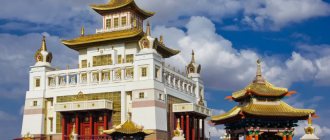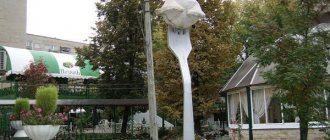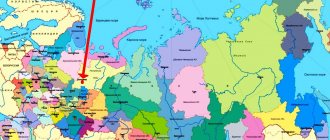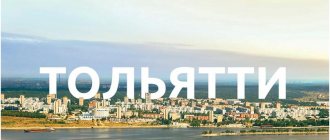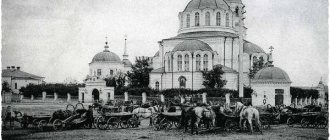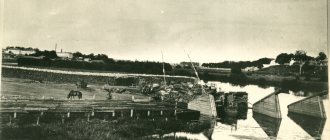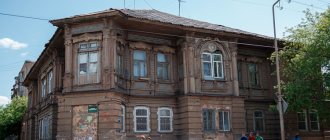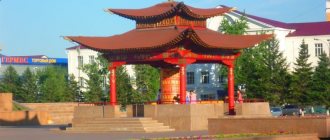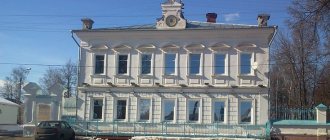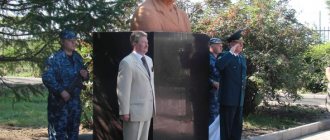| Kalmykia |
Kalmykia
, a republic in Russia. It is part of the Southern Federal District and is part of the Volga economic region. The capital is Elista. It is located in the extreme southeast of the European part of Russia, in the southeast it is washed by the Caspian Sea. It borders: in the south - with the Republic of Dagestan, in the southwest - with the Stavropol Territory, in the west - with the Rostov Region, in the northwest - with the Volgograd Region, in the east - with the Astrakhan Region. Territory area 74.7 thousand square meters. km, population 275.4 thousand people. (2018). Official languages: Kalmyk and Russian
- On the map: Yandex.Map, Google map
The ancestors of the Kalmyks - the Oirats (Western Mongols), who lived in Central Asia (Dzungaria and neighboring regions), split up at the end of the 16th - beginning of the 17th centuries, some of the Oirats moved through Southern and Western Siberia to the Lower Volga and the Northern Caspian Sea, where they settled in the first third XVII century, displacing the Nogais from there.
In the process of resettlement, the Western Mongols formed into a separate ethnic group - the Kalmyks. In the middle of the 17th century, the Kalmyks finally established themselves in the west of the Great Steppe, partly subjugating and partly displacing the nomadic nomads of the Greater and Lesser Nogais to the Crimea and the Caucasus. The nomadic pastures of the Kalmyk tribes in the Lower Volga and in the Northern Caspian region occupied the territory in the south to the Terek, in the north to the city of Samara, in the west to the river. Don and in the east to the river. Yaik (Ural); later, the area of residence decreased and roughly corresponded to the borders of modern Kalmykia. The first ruler of the Kalmyk (Torgout) Khanate formed in the Lower Volga (existed in 1633-1771) was Taisha Kho-Urlyuk (1633-1644). The Khanate was divided into uluses governed by noyons; the uluses consisted of aimaks and khotons, subordinate to the zaisangs. The Khanate reached its peak during the reign of Ayuki (1672-1724). Kalmyks found themselves on the territory of the Russian state at the beginning of the 17th century. In 1608, Tsar Vasily Shuisky received one of the first Kalmyk embassies and agreed to the request for the Kalmyks to accept Russian citizenship. In 1655, the Kalmyks gave the first shert record (oath of allegiance) to the Russian Tsar (subsequently, the Kalmyks repeatedly gave sherts and violated them).
From the second half of the 17th century, at the request of the Russian government, Kalmyks took part in military campaigns. While maintaining loyalty to Russia, the Kalmyk khans pursued an independent policy in the 17th and first half of the 18th centuries. During the reign of Ayuki, the Kalmyks and the Tatars under their control often attacked Russian villages. In 1684, Ayuka suffered hostilities beyond the Urals: he fought with the Kyrgyz-Kaisaks, then conquered the Mangyshlak Turkmens; His wars with the North Caucasian peoples date back to the same period. In the 17th-18th centuries, the Kalmyk Khanate maintained constant contact with other Mongol states. In the 17th century, despite treaties of dependence on Russia, the Kalmyk khans received approval of their status from the Dalai Lama.
After the death of Ayuki (1724), the Russian government established the practice of directly appointing the ruler of the Kalmyk Khanate in the status of governor. In 1732-1734, the population of a number of uluses that did not submit to the new khan migrated to Kuban. In the middle of the 18th century, the governor of the Kalmyk Khanate was included in the management system of the Astrakhan province; in 1762, a reform of the traditional judicial-administrative body of the Kalmyks - zargo - was carried out, as a result of which the judicial and political power of the khan (governor) decreased.
In January 1771, almost three-quarters of the Kalmyks (about 150 thousand people), led by Khan Ubashi, left Russia for territories controlled by China, half of those who migrated reached their destination, and all the livestock was lost. There are approx. left on the Volga. 55 thousand people The reason for the resettlement was the dissatisfaction of many Kalmyk noyons with the amount of military booty, which was a traditional source of wealth, as well as with the Christianization of Kalmyks carried out by the Russian government and the colonization of nomadic places. By decree of Empress Catherine II Alekseevna of October 19, 1771, the Kalmyk Khanate was liquidated, its territory, as an autonomous entity, the Kalmyk steppe, became part of the Astrakhan province.
On March 10, 1825, “Rules for the management of the Kalmyk people” were published, according to which Kalmyk affairs were transferred from the Ministry of Foreign Affairs to the Ministry of Internal Affairs of the Russian Empire. In the second half of the 19th century, the Kalmyk steppe was divided into uluses: Maloderbetovsky, Manychsky, Aleksandrovsky (Khosheutovsky), Bagatsokhurovsky, Ikitsohurovsky, Kharakhusovsky, Yandyko-Mochazhny, Erketenevsky, Bolshederbetovsky (in 1860 it became part of the Stavropol province).
After the October Revolution of 1917, some Kalmyks joined the Astrakhan Cossack Army. In the summer-autumn of 1919, most of the Kalmyk settlement area came under the control of white troops; by March 1920, Soviet power was established here.
In July 1920, an autonomous region of the Kalmyk working people was formed as part of the RSFSR with its center in Astrakhan (since 1926, the center has been Elista). In 1926, an alphabet based on the Cyrillic alphabet was introduced everywhere.
On October 20, 1935, the autonomous region was transformed into the Kalmyk Autonomous Soviet Socialist Republic.
In the 1930s, radical socio-economic and cultural reforms began in the republic, associated with the final transition from a nomadic to a settled way of life.
During the Great Patriotic War from August 1942 to January 1943, a significant part of the Kalmyk Autonomous Soviet Socialist Republic was occupied by German troops and liberated during the Red Army counteroffensive near Stalingrad.
On December 27, 1943, as a result of accusations against Kalmyks of collaboration, the Kalmyk Autonomous Soviet Socialist Republic was abolished, its territory was transferred to the formed Astrakhan region (eight districts), as well as the Stavropol Territory, Stalingrad and Rostov regions. The city of Elista was renamed Stepnoy, more than 92 thousand people were deported to Siberia, Central Asia and Kazakhstan.
On January 9, 1957, by decree of the Presidium of the Supreme Soviet of the USSR, the autonomy of Kalmykia was restored and the Kalmyk Autonomous Region was formed as part of the Stavropol Territory. In July 1958, the region was transformed into the Kalmyk Autonomous Soviet Socialist Republic; the territory of the Dolbansky and Volga uluses of the former Kalmyk Autonomous Soviet Socialist Republic remained in the Astrakhan region.
In 1957-1959, over 72.6 thousand Kalmyks returned to their native lands. During the years of the Soviet five-year plans, agriculture and industry developed intensively in Kalmykia.
In 1959-1965, 22 enterprises were built in the republic, including the Caspian Machine-Building Plant, knitting and clothing factories. In 1970, an airport was opened in Elista.
In October 1990, the Kalmyk SSR was proclaimed as part of the RSFSR.
In February 1992, the republic received its modern name.
On April 5, 1994, the Steppe Code (Constitution) of the Republic of Kalmykia was adopted.
History of Kalmykia and Kalmyks
The history of the Kalmyks as a people begins at the end of the 16th century, when the Oirat tribes were divided into three parts, one of which moved from Central Asia to the territory of the modern Republic of Kalmykia, where it consolidated within Russia in 1609.
The first time was accompanied by frequent wars, including internecine wars, changes in borders and nomadic movements. Kalmyks periodically swear allegiance to Russia, but often violate agreements by attacking Russians. But around the end of the 18th century, a quiet life began as part of Russia.
In 1917, the so-called Steppe Region of the Kalmyk people was formed, and in 1920 - the Kalmyk Autonomous Region, which 15 years later was transformed into the Kalmyk Autonomous Soviet Socialist Republic.
1943 was one of the darkest years in the history of the Kalmyks - the Kalmyk Autonomous Soviet Socialist Republic was abolished, its territory was transferred to the Astrakhan region, and almost all Kalmyks were deported (mainly to Siberia).
Only 14 years later did the Kalmyks return to their homeland, and in 1958 the Kalmyk Autonomous Soviet Socialist Republic was restored, which in 1992 was renamed the Republic of Kalmykia.
Republic of the Russian Federation
Until 2014, there were 21 republics in Russia. After reunification with Crimea, there were 22 of them. All subjects have equal rights and can officially approve a second language and their own republican symbols.
By their status, republics secure the integrity of the territories. May have features in economics and politics. At the same time, the rules, laws, and activities of the republic cannot contradict the legislation of the Russian Federation.
List of republics
The republics of Russia are located in five federal districts. They all have different cultures, sizes of territories, histories. But each such subject has the same rights, freedoms and obligations. Most of them appeared under the USSR.
| Republic | Capital Cities | Languages (besides Russian) |
| Adygea | Maykop | Adyghe |
| Altai | Gorno-Altaisk | Altaic |
| Bashkortostan | Ufa | Bashkir |
| Buryatia | Ulan-Ude | Buryat |
| Dagestan | Makhachkala | Avar, Agul, Dargin, Chechen, Tabasaran, Azerbaijani and others |
| Ingushetia | Magas | Ingush |
| Kabardino-Balkaria | Nalchik | Balkar, Kabardian |
| Kalmykia | Elista | Kalmyk |
| Karachay-Cherkessia | Cherkessk | Karachay, Circassian, Nogai, Abaza |
| Karelia | Petrozavodsk | Karelian |
| Komi | Syktyvkar | Komi |
| Mari El | Yoshkar-Ola | Mari |
| Mordovia | Saransk | Mordovian |
| Sakha (Yakutia) | Yakutsk | Yakut |
| North Ossetia Alania | Vladikavkaz | Ossetian |
| Tatarstan | Kazan | Tatar |
| Tyva | Kyzyl | Tuvan |
| Udmurtia | Izhevsk | Udmurt |
| Khakassia | Abakan | Khakassian |
| Chechnya | Grozny | Chechen |
| Chuvashia | Cheboksary | Chuvash |
| Crimea | Simferopol | Crimean Tatar, Ukrainian |
Each subject is enormous in its significance for Russia.
Yakutia covers 1/6 part (more than 3 million km2) of the entire territory of the Russian Federation. If you look at the map, you can see that approximately 40% of its area is located beyond the Arctic Circle. A sparsely populated area due to the climatic characteristics of the region, less than a million people live in the republic.
But economically, Yakutia is one of the ten richest territories in the country (ranked 9th). A huge amount of mineral resources allows the republic to exist safely, regardless of the level of federal funding. Citizens living in Yakutia receive high incomes.
By the way, the remains of mammoths are regularly found here.
Yakutia is the largest subject in Russia by area, and the smallest is Ingushetia - 3628 km2. But in terms of density, Ingushetia ranks fifth in the country. Chechnya and North Ossetia are also densely populated regions.
Dagestan is considered the poorest republic. Industry is poorly developed here, sources of minerals are scarce, and the land is not particularly productive or suitable for farming.
Altai is considered the second Switzerland. There is very beautiful, rich nature, great cultural heritage, and a well-developed tourism industry. Bashkortostan, or more precisely the city of Ufa, is the largest oil refining center. There are also many sanatoriums, recreation centers, and hospitals in the republic.
The local nature is conducive to relaxation and treatment. There are many nature reserves and forest areas. Forests occupy 40% of the area of Bashkortostan. The mufti of the Spiritual Administration of Russian Muslims and believers from some CIS countries is in Ufa.
Karelia is one of the main tourist centers of the country. The nature here is gorgeous and there are many interesting monuments. Fishing and hunting are excellent. The unforgettable beauty of the White Sea, lakes and rivers. In addition to the tourism industry, Karelia is known for its efficiently operating industry - paper and wood processing, production of building materials, forestry and mining.
Crimea joined Russia in 2014 after a referendum. Most of the population supported a return to Russian roots. Since then, the Crimean Republic has been a subject of the Russian Federation and its main tourist center.
After reunification with Russia, a new Constitution, new authorities, and republican symbols were established in Crimea. Now Crimea is the most subsidized region of the Russian Federation, financing occurs at the level of tens of billions of rubles annually.
Geography and climate of Kalmykia
The Republic of Kalmykia has many neighbors, in the south there are the Stavropol Territory and the Republic of Dagestan, in the east there is the Astrakhan region, in the west there is the Rostov region, and in the north there is the Volgograd region. Part of the southeastern territory is washed by the Caspian Sea.
The flat territory of the region is mainly covered with endless steppes, semi-deserts and deserts.
The Caspian Sea is not the only water resource of the republic. In one of the places, Kalmykia, with a narrow ledge, opens up to the Volga - there is the city of Tsagan Aman, in addition to this, the Kuma and Manych rivers flow on the territory of the republic. There are also lakes on the territory of Kalmykia: Lake Manych-Gudilo, Sarpinsky Lakes, Yashalta Salt Lake and Sostinsky Lakes.
The climate of the Republic of Kalmykia is sharply continental. Its features are hot and dry summers, as well as little snow and not the coldest winters (although sometimes the temperature in winter drops significantly). In addition to low precipitation and aridity, a feature of the climate is constant winds.
Elista
This city is called the Buddhist capital. It was founded at the end of the nineteenth century. The capital of Kalmykia, Elista, is a small city. Only one hundred thousand people live in it. Therefore, to get to know him, you can rely on your own feet. Although minibuses are constantly scurrying around the city, there are no traffic jams in the city. The color of Elista fascinates tourists. The abundance of prayer stupas and Buddhist temples is especially striking. It is recommended to visit the Golden Abode of Shakyamuni. This is the largest Buddhist temple in Europe. It consists of seven levels. It is decorated with a twelve-meter statue of the Enlightened One, covered with gold leaf and inlaid with real diamonds. The temple contains holy relics: for example, the clothes of the Dalai Lama from the 14th century. The Seven Days Pagoda has a two-meter prayer drum from a tantric monastery in India. It has mantras written in gold letters in several languages.
Nature of Kalmykia
In the Republic of Kalmykia there are practically no forests and most of the fauna and flora are steppe representatives.
First of all, among them it is worth noting various rodents (gophers, marmots) and saigas, for the protection of which the Black Lands Nature Reserve was created. In addition to them, you can find brown hares, hedgehogs, jerboas and corsacs here. The flora here is represented by truly steppe and desert plants: feather grass, wormwood, camel thorn, cornflowers and Schrenk's tulips.
The second section of this reserve - Lake Manych-Gudilo - also protects numerous populations of various birds: pelicans, swans, greylag geese, bustards, cranes, gulls, swallows and others.
Bortha Spring
It was thanks to the spring that in 1845 the idea of creating a city in the endless steppes arose. Elista was Nicholas I. In 1853, an oak grove . Over time, the forest turned into a park area.
The spring received its name in 1971 . It was named after a flask made of genuine leather - borthi . Nomads always carried it with them. The Bortha spring is surrounded by a concrete ring. It was made for the convenience of collecting water. Nearby is a sculpture made in the form of a vessel. , a Buddhist rotunda appeared near the spring .
Population and economy of Kalmykia
There are three cities in the republic: Elista, Lagan and Gorodovikovsk and 13 administrative districts. The total population is less than 300 thousand people. As you would expect, the majority of the population is Kalmyks, and there are also many Russians. Other nationalities are also represented, mainly residents of other southern republics.
The economy of the Republic of Kalmykia is poorly developed, industry is mainly concentrated in the extraction of minerals (oil and natural gas), there is mechanical engineering, metalworking and the production of building materials.
The rural population is engaged in the cultivation of grain crops, vegetables and melons, as well as animal husbandry and wool production.
Authorities
The People's Khural of the Republic adopts laws and acts. This Parliament includes twenty-seven deputies. The Khural represents the legislative branch. The highest official is the Head of the Republic. He heads the executive branch and forms the Government of Kalmykia. For seventeen years, the Head of the Republic was Kirsan Nikolaevich Ilyumzhinov. This man did a lot to ensure that Kalmykia, the capital Elista and other cities and villages acquired a European appearance. In 2010, on the recommendation of the President of the Russian Federation V.V. Putin, he was replaced in this post by Alexey Maratovich Orlov.
Culture and religion of Kalmykia
Kalmyks have a very interesting and distinctive culture associated with their Asian roots. Religion is also unusual for Russia; the Republic of Kalmykia is one of three regions where Buddhism is preached. Moreover, what is interesting is that the pagan beliefs of the Kalmyks are closely intertwined with Buddhism, not contradicting the teachings of Buddha, but, on the contrary, complementing it.
The Kalmyks also have their own folklore and epic - “Dzhangar”, where the poems tell about the land of the immortals and its inhabitants, powerful heroes. Dzhangarchi (as those who performed folk songs were called) have always enjoyed enormous popularity among the people. But even now the Kalmyks do not forget their culture: in Elista there are many monuments dedicated to the heroes of “Dzhangar”: the Golden Horseman, the monument to Dzhangar, Khongor (heroes of the epic) and other sculptural images.
How to get there
The capital of Elista receives most of the guests of the Republic of Kalmykia. There is one airport in the city. It receives regular flights from Moscow, Stavropol, Rostov-on-Don and Mineralnye Vody. Travel by bus from the capital of the Russian Federation, although it will cost less than a plane (1800 rubles), but lasts more than a day. To get to Elista by train, you first need to get to Stavropol. There you should change to another train moving along the line from the Divnoye station. From Stavropol to Elista you will spend eight hours on the road if you choose ground transport. Bus service also connects the capital of Kalmykia with Volgograd and Astrakhan.
Chess City
Elista is a unique settlement, because it has another city - City Chess . It appeared in 1998 before the World Chess Olympiad on the initiative of Kirsan Ilyumzhinov . Although the chess town is located on the territory of Elista, it is an independent municipal entity. It has its own coat of arms and anthem . This is the main feature of City Chess
In the center of the town is the patroness of the game - the goddess Caissa . Not far from it you can see the Golden Crown - “ Yoryal ”. There is also a multi-storey palace . Its appearance resembles a glass tent. Competitions are held there. The floor in the luxurious palace is decorated with black and white checkers.
On the territory of the city there are various sculptures , a wooden temple and a museum . Not far from City Chess you can see a monument to Ostap Bender . The unofficial name of the chess town is New Vasyuki .
